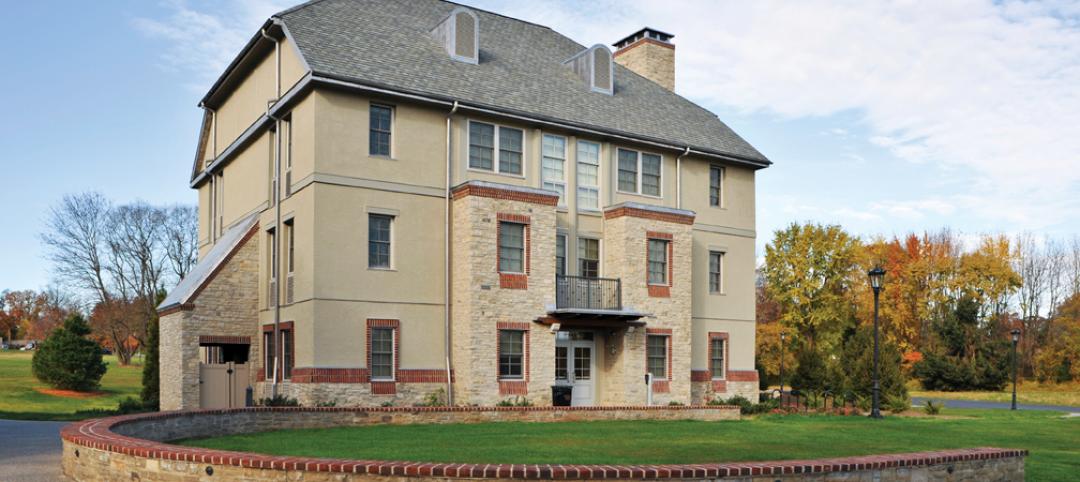Jim Wilson thinks that, in their haste to make their schools modern and efficient, some school districts are installing energy management systems that are overtaxing the ability of their maintenance staffs.
Wilson owns JFW Inc., a 25-year-old project management company in Gaithersburg, Md. Most of the K-12 work he does is with private schools like Sidwell Friends, the Quaker school that President Obama’s daughters attend. Wilson says that Sidwell’s middle school has 3,000 contact points that have to be monitored, which puts a significant burden on the facility’s maintenance staff.
He says energy codes keep raising the complexity level of what’s being installed. Maintenance crews are having trouble keeping up with EMS technology that has jumped by leaps and bounds over the past 10 years. “We didn’t have all of these [air exchange] requirements that we do now,” he says.
Wilson recounts one school’s head of maintenance who was so flummoxed by the facility’s systems that he operated the building as if it were occupied 24/7 so he didn’t have to deal with the controls. “I got a call from the school asking why its electric bills were running sky high,” says Wilson.
Jim Deluge, a Project Executive with Turner Construction, believes that maintenance staffs have a responsibility to “catch up” to the sophistication level of these new EMS systems. On the flip side, HMC Architects’ Sandy Kate thinks problems could be reduced if maintenance staff were included in early planning meetings before construction begins.
School district officials who recognize this potential problem but still want state-of-the-art operating systems will sometimes outsource the monitoring. DRL Group’s Jim French says his firm’s engineers have the ability to remotely monitor a client’s systems and let that school know almost immediately if anything’s askew.
“You have to be careful not to get too exotic,” says Fanning Howey’s Chuck Tyler. The design firm recently worked with a school district in Belleville, Mich., that demanded the systems for a 320,000-sf high school be simple enough for the district’s current maintenance personnel to manage.
Wilson contends that some schools simply don’t need the high-octane systems they specify. One project he worked on called for a $180,000 EMS. What ultimately got installed, he says, was a $40,000 system “that can do pretty much what’s needed in the building” and matches the skill set of the maintenance team.
When school districts demand the latest and greatest, they need to think about how those choices will impact the district’s facilities employees. On one recent project in Connecticut, Wilson had the contractor conduct six months of training sessions for the maintenance staff. “You can’t learn this stuff in two days of classes.”
Related Stories
| Dec 27, 2011
USGBC’s Center for Green Schools releases Best of Green Schools 2011
Recipient schools and regions from across the nation - from K-12 to higher education - were recognized for a variety of sustainable, cost-cutting measures, including energy conservation, record numbers of LEED certified buildings and collaborative platforms and policies to green U.S. school infrastructure.
| Dec 5, 2011
RJM Construction begins building Nova Classical Academy in St. Paul
As the general contractor, RJM is constructing the 94,000-sf building that will consolidate the St. Paul school’s two other locations.
| Sep 23, 2011
Under 40 Leadership Summit
Building Design+Construction’s Under 40 Leadership Summit takes place October 26-28, 2011 Hotel at the Monteleone in New Orleans. Discounted hotel rate deadline: October 2, 2011.
| Sep 12, 2011
LACCD’s $6 billion BIM connection
The Los Angeles Community College District requires every design-build team in its massive modernization program to use BIM, but what they do with their 3D data after construction is completed may be the most important change to business as usual.
| Jul 22, 2011
Five award-winning modular innovations
The Modular Building Institute's 2011 Awards of Distinction highlight fresh ideas in manufactured construction projects.
| May 18, 2011
Former Bronx railyard redeveloped as shared education campus
Four schools find strength in numbers at the new 2,310-student Mott Haven Campus in New York City. The schools—three high schools and a K-4 elementary school—coexist on the 6.5-acre South Bronx campus, which was once a railyard.
| May 18, 2011
Eco-friendly San Antonio school combines history and sustainability
The 113,000-sf Rolling Meadows Elementary School in San Antonio is the Judson Independent School District’s first sustainable facility, with green features such as vented roofs for rainwater collection and regionally sourced materials.
| May 18, 2011
New Reform Jewish Independent school opens outside Boston
The Rashi School, one of only 17 Reform Jewish independent schools in North American and Israel, opened a new $30 million facility on a 166-acre campus shared with the Hebrew SeniorLife community on the Charles River in Dedham, Mass.
| May 18, 2011
Addition provides new school for pre-K and special-needs kids outside Chicago
Perkins+Will, Chicago, designed the Early Learning Center, a $9 million, 37,000-sf addition to Barrington Middle School in Barrington, Ill., to create an easily accessible and safe learning environment for pre-kindergarten and special-needs students.

















